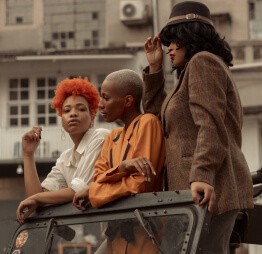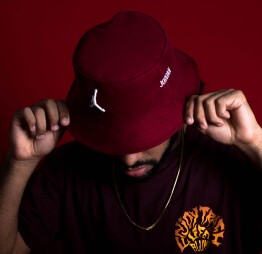Introduction
Dating is an exciting and mysterious journey, filled with both anticipation and uncertainty. When we meet someone new, it is typically natural to see them in the most effective gentle possible, overlooking their flaws and focusing on their positive qualities. But why does this happen? Why will we are inclined to see one of the best in an individual at first? In this article, we’ll explore some psychological and evolutionary causes behind this phenomenon.
The Power of First Impressions
We all know the saying, "First impressions are every little thing." And there is some reality to it. When we meet someone for the first time, our brains routinely begin to form opinions based mostly on their look, body language, and initial dialog. In this preliminary stage, our minds are wired to search for positive traits in others, because it helps us set up a connection and construct trust.
The Halo Effect
One psychological concept that performs a significant position in perceiving the most effective in an individual is named the "halo effect." The halo effect refers to our tendency to imagine that if someone possesses one optimistic trait, they are more likely to possess other optimistic traits as properly. For instance, if we discover somebody bodily attractive, we may subconsciously assume that additionally they are sort, clever, and trustworthy.
In the Spotlight
Another purpose we are inclined to see one of the best in an individual at first is that once we are dating, we’re essentially placing them within the spotlight. During the early stages of a relationship, each individuals strive to present one of the best model of themselves. They costume to impress, plan exciting dates, and punctiliously select their phrases and actions. This heightened stage of attention and effort can create an illusion that the person is flawless, as we solely get to see their greatest conduct.
The Role of Evolution
Beyond psychology, evolutionary factors additionally contribute to our tendency to see the most effective in a person when courting. Throughout human historical past, our ancestors relied on profitable mate choice for survival and procreation. Therefore, it makes sense that our brains are wired to focus on positive traits that point out good genes and the ability to supply and protect.
Survival of the Fittest
In the animal kingdom, we regularly see elaborate courtship displays, where males showcase their physical prowess, intelligence, or sources to draw a mate. Similarly, when relationship, we instinctively look for sure qualities that point out strength, well being, and prosperity. These might include bodily attractiveness, confidence, ambition, and humor. Our brains are naturally drawn to those traits as a outcome of they have been historically linked to elevated possibilities of survival and profitable reproduction.
The Illusion of Compatibility
In the early phases of dating, we are sometimes driven by an innate desire to find a suitable associate. Our brains release chemical compounds like dopamine and oxytocin, which elevate our temper and create a sense of attachment. These chemical substances can cloud our judgment and make us extra inclined to miss pink flags and give attention to the constructive elements of a person’s character. In essence, we create an illusion of compatibility to extend the likelihood of forming a strong emotional bond.
The Importance of Self-Presentation
While psychology and evolution play a major position in why we see the most effective in a person when courting, it’s necessary to acknowledge the impression of self-presentation. When we’re excited about somebody and wish to make a good impression, we are more probably to highlight our optimistic qualities and downplay any unfavorable elements. This act of self-presentation can evoke a similar response from the other individual, leading to a cycle of positivity and mutual admiration.
Putting Our Best Foot Forward
When we meet someone new, we naturally need to showcase our greatest selves. We might emphasize our achievements, show kindness, and have interaction in active listening to demonstrate our interest. This behavior encourages the opposite individual to reciprocate and show their best facet as nicely. As a result, each people end up seeing one another through rose-tinted glasses, no less than initially.
The Vulnerability Factor
Additionally, the early stages of dating are often marked by vulnerability and uncertainty. We may be cautious about revealing our deepest insecurities or past errors for fear of being rejected. As a end result, we are probably to give consideration to the optimistic elements of our lives and personalities, creating an environment that encourages the other individual to do the identical. This mutual vulnerability fosters a sense of trust and intimacy, additional enhancing our notion of the particular person as being the most effective version of themselves.
The Reality Check
While seeing one of the best in a person when dating can be a positive experience, it is important to strategy relationships with a wholesome dose of realism. As time goes on, the preliminary infatuation wears off, and we begin to see each other’s flaws and imperfections. This is a natural progression in any relationship and should be embraced rather than feared. It’s by way of these challenges and discoveries that we truly get to know our companions and construct a robust foundation for lasting love.
So, the subsequent time you find yourself seeing one of the best in a person when dating, do not neglect that it is a combination of psychological, evolutionary, and self-presentation elements at play. Enjoy the thrilling journey of attending to know someone, but in addition keep in thoughts that no one is ideal, and true love is constructed on acceptance and understanding.
FAQ
-
Why do we are probably to see the best in a person after we first start relationship them?
When we first start dating someone, we’re usually in a state of infatuation where our mind releases chemicals like dopamine and oxytocin. These chemicals create a sense of euphoria and make us see the person through rose-colored glasses, only focusing on their positive attributes. -
How does our notion of an individual change as we get to know them better?
As we proceed courting someone and spend more time together, our notion could change as we begin to see their flaws and imperfections. The preliminary infatuation tends to put on off, allowing us to see the particular person extra realistically, including each their optimistic and unfavorable qualities. -
Is there a biological purpose behind our tendency to see the best in an individual at first?
Yes, there is a organic cause behind why we see the best in an individual initially. Our mind’s reward system is activated in the course of the early phases of courting, selling optimistic feelings. It serves as an evolutionary advantage, encouraging mating and copy. -
Are there any potential drawbacks to seeing only the best in an individual during the initial phases of dating?
Yes, there could be drawbacks to seeing only the most effective in an individual at first. By overlooking their flaws, we might idealize the individual and put them on a pedestal, which can lead to disappointment in a while when we understand they don’t seem to be as excellent FatFlirts as we initially thought. It also can blind us to pink flags or warning signs which could be indicative of potential issues in the relationship. -
Can cultural influences impact our perception of a person when dating?
Cultural influences can certainly influence our perception of an individual when relationship. Society often portrays certain characteristics or behaviors as fascinating, and we could subconsciously give attention to these during the initial levels of dating. Cultural norms and expectations can form our preferences and what we understand as the "best" in a person.











